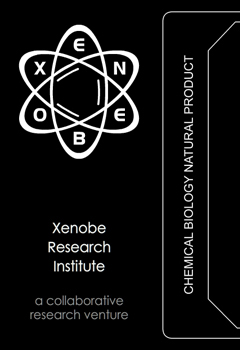

Daumone

When triggered by adverse environmental conditions (temperature, overcrowding or starvation), the nematode Caenorhabditis elegans enters a non-aging dauer state thereby thwarting death (read it now). In 1982, Riddle determined that C. elegans were entered the dauer state when treated with a pheromone isolated from worm extracts, called daumone (read it now). In 2005, Paik and collaborators determined the determined the structure of daumone through large-scale fermentation and total synthesis (read it now). In the same year, O’Doherty completed the synthesis of daumone in 7 steps using Palladium-catalyzed glycosylation method (read it now). Recent studies now indicate that a variety of ascarosides are observed naturally (read it now) and display different phenotypic responses (read it now).
In 2006, collaborative studies with Haibing Guo and George A. O'Doherty at West Virginia University were launched to examine the mechanisms of sensory response within C. elegans. Beginning with two fluorescent amines, blue and green fluorescent amides of daumone were synthesized on the 10 mg scale. Both analogs retained dauer-inducing activity with the blue analog being slightly more active and the green less active than daumone. We have since imaged the uptake and localization of these analogs throughout the C. elegans life cycle. Through these studies, we determined that the localization of these analogs arises in a secondary manner and indicate that these materials may partake in regulating material transport to key sensory neurons in the amphid. We have also launched efforts to identify the daumone receptors. Our current approach is based on using co-immunoprecipitation to isolate daumone-binding proteins. We are currently examining these studies through a team effort with Haibing Guo (WVU) and George O'Doherty (WVU), Andy Dillin (Salk Institute for Biological Studies), Tom Baiga (Salk), Mike Austin (Salk), and Joe Noel (Salk). Studies are also underway to determine if daumone and related analogs induce comparable dauer-induction in nematode species. This work recently appeared in ACS Chemical Biology and was featured on the cover (read it now).
Copyright 2004-2012 | The Xenobe Research Institute | a California-based 501(c)(3) organization.